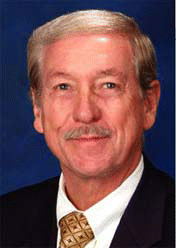Diagnosis and Treatment Planning
When Dr. Sykes took the podium, he told participants that “accurate diagnosis is the most important thing to planning and ultimately getting a good result. I feel that when the nose isn’t straight after surgery it’s often because we’ve either underdiagnosed or inadequately diagnosed.”
Explore This Issue
July 2007He stressed that it is important to discuss symmetry with patients. “If a patient has significant bony asymmetry, you probably can’t fully straighten the nose. You need to manage their expectations.”
Noting that there are 27 permutations to the upper, middle, and lower thirds of the nose, he said a deviation may be any one of these. And failure to correct that deviation “results from inadequate diagnosis, poor planning, faulty execution, or suboptimal healing. By and large, the inadequate diagnosis and poor planning are the most common.”
In a discussion of osteotomies, he said they are performed when the upper third of the nose is deviated, and the exact technique and style of the osteotomy should be related to what the specific problem is. Lateral osteotomies are performed to narrow or infracture the nose, but may be inadequate by themselves. “We need to do medial osteotomies or medial and intermediate osteotomies to fully straighten the nose,” he said.
Skin Strategies
Dr. Byrne told audience members that during his fellowship, he was told that it takes seven years to master 70% of rhinoplasty. With that introduction, he went on to describe some of his greatest challenges over the years. For the COSM program, he paid special attention to extremely thick or thin skin.
“Thick skin introduces great challenges, prolonged edema, and difficulty in achieving a very nice definition,” he said. “Thin skin very easily shows small irregularities. Intermediate thickness of skin is most favorable and the easiest patients to satisfy.”
So, what does one do when the skin is less than optimal?
First, counsel and educate the patient; help the patient have realistic expectations and educate him or her about proportion.
“When a patient comes in and asks that their nose be larger, most everybody really wants a more proportional look,” he said. “The educational process starts by going through photographs and showing them how you can make a nose technically larger than it is and yet it looks more proportional.”
“The main strategy for thick skin is to use more structural grafting,” Dr. Byrne said. “Focus on proportion and shape, less on size.”

Leave a Reply